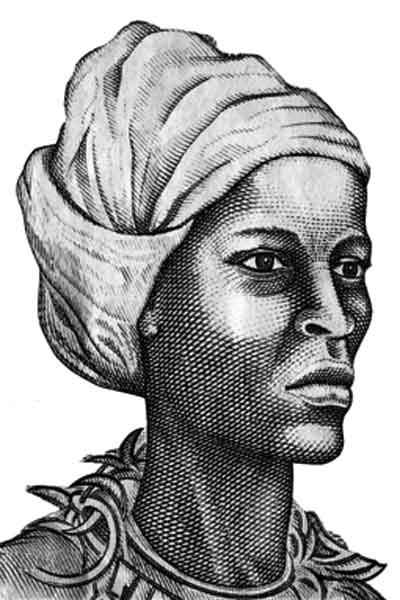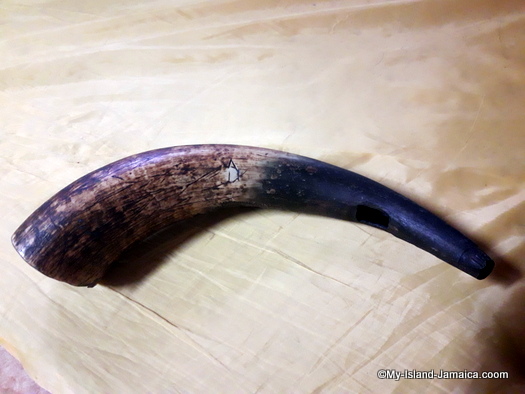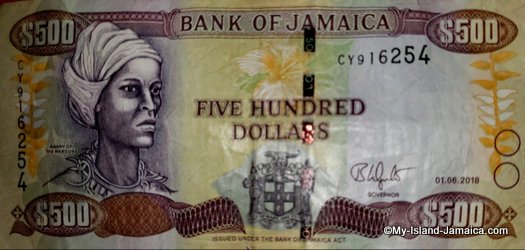Subscribe for all my updates and don't miss a thing! Sign me up!
15 Interesting Notes About Jamaican National Heroine – Nanny Of The Maroons
by Deon Clarke | Associate Writer

Photo: National Hero - The Right Excellent Nanny of the Maroons
Our Annual Heritage Week Celebrations in October is the perfect opportunity to pay special attention to the contributions, achievements and sacrifices of our National Heroes. Their invaluable contribution to nation-building is truly appreciated. Today I introduce a very special one, special not only because of the contributions but because of gender. I speak of no other than Nanny of The Maroons – Jamaica’s Only Female Hero (A Heroine) and Charismatic Military Leader. So how much do you know about her? Well, let’s take a trek through her life’s journey and look at just 15 things to note about this amazing woman.
- Nanny (Queen Nanny or Granny Nanny as she is affectionately called) is believed to have been born of the Ashanti people in about 1686 in what we know today as Ghana in West Africa.
- She was the leader of the Jamaican Maroons during the 18th Century. She was the leader of the Windward Maroons (a community of former African slaves). She helped runaway slaves who had escaped to the mountains and accepted them into the community.
- During the early part of the 18th Century, the Winward Maroons along with Nanny as their leader fought guerrilla warfare for many years (1728-1734) with the British in Jamaica and it became known as The First Maroon War.
- How Nanny arrived in Jamaica is a mystery but legend has it that she was never enslaved. It is widely assumed, however, that she came to Jamaica as a slave.
- Nanny was thought to have practised obeah or have magical or supernatural powers by the Maroons. Some even attributed it to their success against the British. It is widely believed that she could catch bullets and redirect them to her attackers. Historians, however, believe that the Maroons mastered the art of guerrilla warfare and this was the source of their success against the British.
- On April 20, 1740, unable to defeat the Maroons, the British decided to sign a peace treaty with them. This treaty ended the hostilities between them and provided sanctioned freedom by the State for the Maroons. It also included a grant of 500 acres of land to Nanny and her followers. The Maroons built a village on the land which still stands today and is called Moore Town, known also as the New Nanny Town. Modern members of the Moore Town celebrate April 20 of each year as a holiday as a memorial.
- Nanny was the head of all the Maroons. Though she had direct responsibility for the Windward Maroons, she shared leadership of the Eastern Maroons with Quao, and with Captain Cudjoe (her brother) in Accompong in the West. Both men were her brothers.

Photo: The Abeng - Nanny’s troops of Maroons were considered to be masters of camouflage. They were known as Coromantee and stood out because of their ferocious fighting skills. They also had their own communication system – “the Abeng” (made from cow horn) which they blew to alert of pending danger among other things. The English were clueless about this system.
- Nanny had exceptional leadership qualities, and though she had a small frame, she had a very strong influence over the Maroons. She cleverly planned and executed sneak attacks on the British which more often than not went according to plan. Also, she never allowed her forces to kill all of the attackers but always leave a remnant to return to tell the tale of their horrific encounter.
- She was revered as a “Wise Woman” of the village, passing down legends and encouraging the continuation of their African customs, music, dance, and songs which helped to boost their confidence and pride.
- She was reportedly very angry when Quao signed the second treaty with the British as she was not in agreement with some of the principles or terms of the treaty as she believed this would still give the British some amount of control over them. (The first was signed by Cudjoe a few months earlier). These treaties also prohibited the assistance of runaway slaves but to rather take them in for a price, and also to fight for the British against attack from the French and the Spanish.
- The exact date of her death is unknown but it is believed that she lived to be an old woman and died of natural causes some time in the 1760s.
- On March 31, 1982, The Right Excellent Nanny of the Maroons was conferred with Jamaica’s highest honour, the Order of the National Hero.
- The face of our only heroine graces the 500-dollar note in Jamaica’s Currency

Photo: Nanny of the Maroons on the $500 Note - Nannyville Gardens, a residential community in Kingston, Jamaica is named after her and there is also a monument in her honour located at Moore Town in Portland.
Nanny of The Maroons – a military leader, a warrior queen, a freedom fighter, a teacher, and so much more. Yes, she possessed all the qualities that make for an exceptional National Hero (Heroine) of Jamaica. I’m sure she is an inspiration even today to many, especially women, who are willing to fight for the causes they are passionate about.
I also recommend you read, Queen Nanny Of The Maroons Maroon Warrior & Military Tactician.
Regards,
DC
References:
- Nanny Of The Maroons | National Hero | Indomitable, Resolute & Defiant, My-Island-Jamaica, https://www.my-island-jamaica.com/nanny_of_the_maroons.html
- Nanny of the Maroons, Jamaica Information Service, https://jis.gov.jm/information/heroes/nanny-of-the-maroons/
- https://nlj.gov.jm/qcontentnational-heroes/, National Library of Jamaica, https://nlj.gov.jm/qcontentnational-heroes/
- https://www.encyclopedia.com/history/encyclopedias-almanacs-transcripts-and-maps/nanny-maroons, Encyclopedia, https://www.encyclopedia.com/history/encyclopedias-almanacs-transcripts-and-maps/nanny-maroons
New! Get My Latest Book👇🏿
|
You asked, I've answered! You no longer need to save for months or years, to enjoy paradise! I spilled the beans! sharing my top tips on finding cozy accommodations and secret gems, only the way a native could! Click Here to pick it up on my e-store and start saving now! |
See The Best Of Jamaica - In Videos!
|
My channel reaches over 140,000 subscribers worldwide and has leveraged over 11 million views, sharing, what I call 'The Real Jamaica'. Subscribe today and join our family of viewers. |
Read More ...
New! Experience The REAL Jamaica!
Book Your Private Tour here and experience Jamaica the way we (locals) do!
P.S. Didn't find what you were looking for?
Still need help?
Click Here to try our dependable and effective Site Search tool. It works!
Or, simply click here and here, to browse my library of over 500 questions and answers! Chances are someone already asked (and got an answer to) your question.





